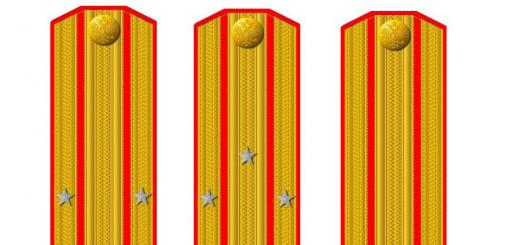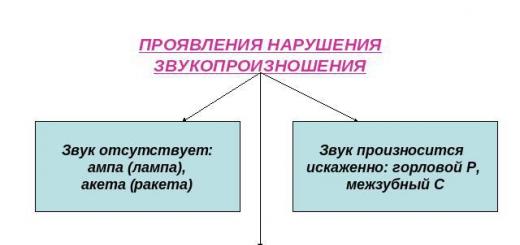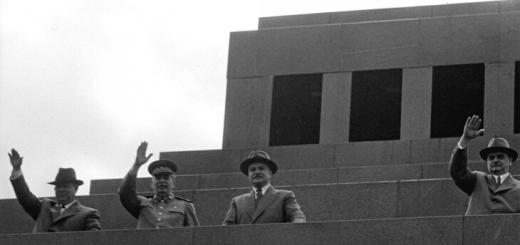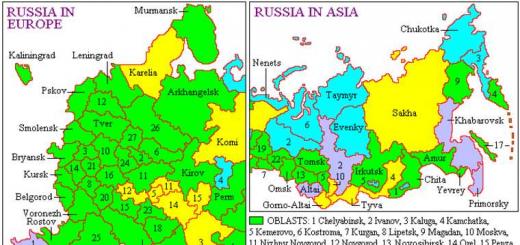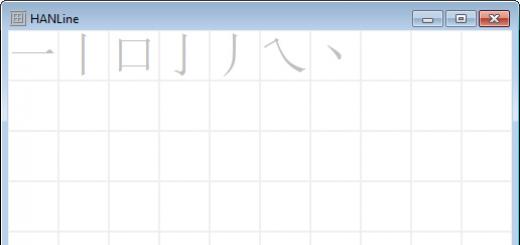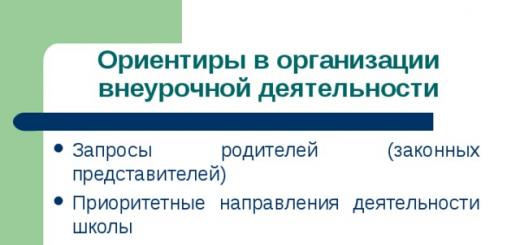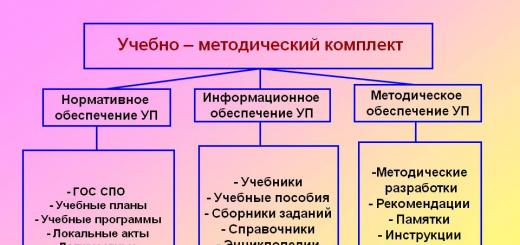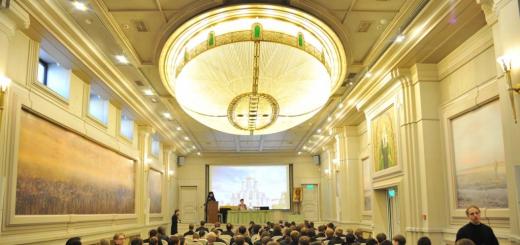To use presentation previews, create a Google account and log in to it: https://accounts.google.com
Slide captions:
Slide 2
CHOOSE A UNIFIED SCHOOL UNIFORM
Slide 3
Recall the history of school uniforms in Russia; Find out the opinions of teachers, parents, specialists and schoolchildren themselves; Determine the style and color of the uniform
Slide 4
Main criteria for the future form
BeautifulNeatComfortableStrictFor special events you only need a white apron
Slide 5
Historical reference
“School uniforms came to Russia from England in 1834. Until 1917, the uniform of high school students was the preferred clothing, because... The children who studied in gymnasiums were not poor. This uniform was a source of pride! In 1836, a set of rules regarding color and style even appeared.”
Slide 6
What was the school uniform like?
in Tsarist Russia
in Soviet Russia
Slide 7
“On compliance with the requirements for school uniforms” In accordance with the Charter of the school, the rules of student behavior, since the 2006-2007 academic year, a SCHOOL UNIFORM FOR STUDENTS OF 1st - 11th GRADES has been introduced at the secondary school with in-depth study of subjects of the artistic and aesthetic cycle No. 23. THE DESCRIPTION OF THE FORM IS APPROVED BY THE DECISION OF THE TEACHING COUNCIL OF THE SCHOOL PROTOCOL No. 4 OF 04/24/2006. The school uniform for boys and young men consists of a dark-colored suit (dark blue): trousers, jacket, light-colored shirt and tie. In the winter season, a jumper under a jacket is allowed. The school uniform for girls consists of a sundress with a dark-colored blouse (dark blue) no higher than 5 centimeters from the knee, a dark-colored dress, and a black and white apron. For special occasions - a skirt and a white blouse. The sports uniform for physical education lessons consists of a sports tights, sweatshirt and T-shirt, and shoes - sneakers or sneakers.
School Charter
Slide 8
Is a uniform school uniform necessary?
SURVEY
Slide 9
Parents' opinion
The shape must be the same. There must be a uniform business style so that children like it. There must be a school uniform, but our climatic conditions must be taken into account.
Slide 10
Professional opinion
A beautiful, high-quality school uniform fosters style and helps shape taste in clothing in the future. Children should learn from childhood that a costume is more than just clothing. How you look determines how others will communicate with you. Vyacheslav Zaitsev
Slide 11
Psychologists have found:
parents will never be able to instill in a boy discipline, neatness, and the ability to behave in society if they do not pay due attention to his appearance. A high-quality school uniform for boys will help solve this problem. Therefore, teachers recommend it as an alternative to a loose clothing style.
Slide 12
This is what our form will look like
dress
collar and cuffs
shirt
blazer
trousers
Slide 13
Material question How much will the school uniform we choose cost?
1800 rub.
rub.
Slide 14
Master dressmaker
There is a mother in our class who is a professional seamstress, and she agreed to sew dresses for our girls.
Slide 15
Conclusion
School uniform is a compulsory everyday dress for students while they are at school and at official events outside of school.
On the topic: methodological developments, presentations and notes
Extracurricular activity "Do I need a school uniform"
This topic of the event is relevant in modern education. The purpose of the event: to introduce students to the basic styles of clothing, the features of business style. Objectives: to teach schoolchildren to beautifully and tastefully...
Research work "Who needs it - a school uniform?"
Some parents like school uniforms, others don't. But both of them want their children to be collected and attentive, responsible and independent. And so that every morning they don't stand in front of...
Relevance of school uniforms The idea of returning school uniforms to educational institutions has recently become increasingly relevant. Today, in many schools, gymnasiums and lyceums, school uniforms are becoming mandatory. And this is the reason for numerous protests from students. In this regard, we decided to find out the attitude of students towards school uniforms, as well as what role uniforms play in the lives of not only schoolchildren, but also in the professional sphere.

We assume that the main reason for the negative attitude towards school uniforms is the lack of awareness among children about the role and importance of uniforms in modern society, and insufficient propaganda work in introducing uniforms. Students perceive teachers’ demands to wear school uniforms as a violation of their rights. But with appropriate work to create positive motivation for school uniforms, it is possible to turn the situation around.



An interesting fact about schoolchildren: When we drew the children’s attention to the fact that a uniform can also show belonging to any group and can play the role of an indicator of a certain status, position in society, they agreed that they had not thought about this aspect of the school uniform . A significant part of the children said that they would agree to wear a SPECIAL uniform, for example, with the logo of THEIR school, which would distinguish them from the same students of other schools. Or, a school uniform, which would differ in its design from all other forms.






The point is that we prefer to give students options for their daily school wardrobe beyond the mandatory school clothing set. And also, offer them a choice of accessories for these clothes, which they can easily use in everyday life. For example, leg warmers, knee socks and mitts.



Diseases of school years progress in adolescence, creating the basis for the manifestation of the clinic of osteochondrosis in adults. The reasons for poor posture in schoolchildren can be very diverse, the main one, according to the consensus of experts, is a sharp decrease in the child’s motor activity in connection with entering school. Along with a sharp movement of activity, younger schoolchildren develop a reflex of incorrectly holding the body, which turns into a static-dynamic stereotype.

A solution was found: Taking into account the above, it was proposed to develop a school uniform that would simultaneously serve as clothing for the prevention of postural disorders in children of primary school age, forming a stable static-dynamic stereotype of the child unnoticed by himself and others.

The issue of forming correct posture precisely through school clothes is also due to the fact that, according to many experts and parents, school uniforms discipline and psychologically mobilize children, they try to look like ideal students in them, involuntarily pulling themselves up and this has a beneficial effect on the condition of their backs, The same cannot be said about loose school clothes, which do not meet basic hygienic requirements and cause illness.

Functions of school clothes: School clothes should be practical, comfortable, reliable to use, and comfortable for the child when temperature conditions change. In addition, such clothing should provide primary schoolchildren with ease of putting on and taking off.


The purpose of social requirements is to quickly facilitate the child’s adaptation to the learning process and develop a sense of corporate cohesion. Uniforms should organize, increase discipline, help reduce social differences, and develop neatness in children.

Aesthetic requirements are no less important for students. It has long been known about the enormous importance of the psychophysiological effect of color on the human psyche. Uniforms for a schoolchild should please and attract the eye, creating a harmonious appearance and thereby creating the need for the use of school clothes by means of artistic design.


Uniforms, being mandatory for students of one educational institution, should be designed for families with different levels of income, so an important factor for parents is the combination of high quality clothing at a moderate cost.

Thus, uniforms that have a healing effect are a complex multifunctional object designed to simultaneously meet a number of requirements. Taking these requirements into account when designing clothing for school allows us to develop high-quality clothing that forms correct posture, improves the child’s adaptation to the learning process, ensures a comfortable feeling of self and improves performance.

Our advantage: The fabric of the products is shape-resistant, does not wrinkle thanks to the stretch weaves, and is easy to use. The designs of the products have a fashionable silhouette shape and are designed for various types of figures. The entire collection was developed using new technology, based on OST

All collections comply with the requirements of regulatory documents: GOST (clauses 5.2.1,5.2.2,5.4.4), GOST (clauses 5.2.1,5.2.2,5.4.3), GOST (clause 4.2 .8), GOST (clause 1.2, table 1, clause 1.3 table 2), SanPiN 2.4.7/ “Hygienic requirements for clothing for children, adolescents and adults. Sanitary and epidemiological rules and regulations.”

The administration of VINZIONI, after concluding an agreement with the school, undertakes to: complete the order by July 1 upon a preliminary application received from parents. The form will be issued from July 1 to August 31, at a convenient time. We produce products in two full groups with a large number of sizes and heights (corresponding to GOST), which allows us to dress almost all children. Children with a non-standard figure will receive an individual approach. When selecting a set, an additional set of products of different sizes is possible that suit your child. for the next school year, if the child has not outgrown the previously purchased uniform, you will not have to purchase a new set. the set offered each year will be from the same fabric and the same style. In case of failure (torn or burned) of a specific product (jacket, vest, trousers, sundress, skirt), you can purchase it separately. VINZIONI company offers annual, long-term cooperation. A preliminary application for the form must be submitted before November 1, making an advance payment of 1000 rubles. Best regards, VINZIONI administration.

1 slide

2 slide
The fashion for school uniforms came to Russia from England. In 1834, Nicholas I issued a decree that approved the general system of all civilian uniforms in the Russian Empire, which also included gymnasium and student uniforms. In 1896, after opening access to educational institutions for females, regulations on gymnasium uniforms for girls were approved. They were required to wear brown dresses that emphasized the waist, with pleated knee-length skirts. Variety was provided by aprons: everyday aprons - black made of cotton, holiday ones - white from thin cambric. The only addition to the formal outfit were white lace collars.

3 slide
Everything changed with the coming to power of the Bolsheviks. The Decree “On a Unified School...” of 1918 abolished the uniform for students, recognizing it as a legacy of the tsarist regime. By the end of the 1940s. uniforms have returned to schools. In 1949, a uniform school uniform was introduced in the USSR by decree of the Ministry of Education. Now its absence was associated with bourgeois licentiousness, and attempts to change anything about it were strictly punished

4 slide
At the same time, Soviet symbols will become an attribute of students: pioneers have a badge and a red tie, October students and Komsomol members have a badge on their chest.

5 slide
In 1973, the uniform for boys changed again. Now the guys came to lessons in a blue uniform: straight trousers and a wool-blend jacket, reminiscent of denim, with flap pockets, five aluminum buttons, cuffs and an emblem on the sleeve: an open textbook and a rising sun. Three years later, a new uniform was introduced for high school girls: it was a three-piece suit, consisting of a skirt, vest and jacket.
Municipal educational institution
Zabrodenskaya secondary school
Information and creative project
School uniform
Work completed
Student 3 "B" class
MKOU Zabrodenskaya secondary school
Uvarova Valeria
Supervisor:
Nagina Nadezhda Alexandrovna
primary school teacher,
With. Zabrody 2014
Introduction……………………………………………………………………......3
1. School uniform………………...…………………………………………..
1.1 History of the introduction of school uniforms in Russia…………………………… 4
1.2. Post-war school uniform………………………………………………………4
1.3. Modern school uniform………………………………………………………5
1.4. Basic requirements for school uniform……………………………..5
2. Results of the survey………………………………………………………………..6
Conclusion................................................. ........................................................ .......7
Literature………..………………………………………………………………………………..8
Introduction
School uniform is a mandatory daily uniform for students while they are at school and at official school events outside of school.
On October 18, 2012, at a meeting with representatives of the activists of the All-Russian Popular Front, President Vladimir Vladimirovich Putin proposed introducing a unified school uniform, as this would solve many problems, including social, national and religious inequality among students. Currently, there are different opinions on the issue of introducing school uniforms. Today it is becoming compulsory in many schools and has the following advantages:
Requires a person to comply with certain standards of behavior;
Develops in the child internal discipline and a good taste for elegant business style;
Forms a sense of unity with the class and school.
Our school has also introduced a school uniform, so I consider this topic relevant to me.
Goals and objectives of my work:
find out students' opinions on the need to introduce school uniforms.
get acquainted with the history of the appearance of school uniforms in Russia;
analyze the opinion of students and their parents on the issue of introducing the form;
develop your own model of school uniform.
Subject of study: school uniform, the history of its introduction in Russia, the attitude of parents and primary school students towards it.
Hypothesis: If students and their parents receive more information on the history of school uniforms in Russia, it will be possible to develop a unified approach to the introduction of school uniforms.
Research methods:
Studying literature and Internet sources on the topic.
Partial search (questioning, comparison, analysis and conclusions.)
Development of your own model of school uniform.
1. School uniform
1.1. History of the introduction of school uniforms in Russia
The first school uniform in Russia was introduced in 1834. First - for high school students and students, and only for boys. The uniform of gymnasium students was a sign of class, because only the children of nobles, intelligentsia and large industrialists studied in gymnasiums. The uniform was worn not only in the gymnasium, but also on the street, at home, during celebrations and holidays. She was a source of pride. Before the 1917 revolution, high school boys dressed like this: a cap with the school emblem, a tunic, an overcoat, a jacket, trousers, black boots, and a satchel.
The regulations on gymnasium uniforms for girls were approved in 1896.In state gymnasiums, pupils wore brown dresses with a high collar and aprons - black on school days and white on holidays. The dress uniform was complemented by a white turn-down collar and a straw hat.
After the revolution in 1918, a decree was issued abolishing the wearing of school uniforms. In the early years of the Soviet state, wearing a school uniform was an unaffordable luxury in a country devastated by world war, revolution and civil war. This time is called a period of "formlessness".
1.2. Post-war school uniform
In 1949 year, the period of “formlessness” ended. A uniform school uniform was introduced in the Soviet Union. The boys wore gray military tunics, a belt with a buckle and a cap with a cockade. The girls wore brown woolen dresses with a black apron, and on holidays - with a white one.
Since early 1960 -ies, the uniform was changed in the direction of moving away from the “militarism”.The boys received a gray wool blend suit - trousers and a single-breasted jacket with three black plastic buttons. A white shirt was recommended under the jacket. The girls' uniform remains the same.
For boys, from the 1975-1976 school year, gray woolen trousers and jackets were replaced with trousers made of blue wool blend fabric. The cut of the jackets was reminiscent of classic denim jackets with shoulder straps and chest pockets with flaps. The jacket was fastened with aluminum buttons, the design reminiscent of military ones. On the side of the sleeve was sewn from soft plastic with a drawn open and rising sun - a symbol of enlightenment. A mandatory addition to the school uniform were the October badges (in primary school), Pioneer badges (in middle school) and Komsomol badges (in high school). For pioneer activists, the badge was slightly larger than usual, and it bore the inscription “For active work.” Pioneers were also required to wear a pioneer tie. For girls, the uniform remained unchanged. Our mothers and our teacher also wore brown dresses with black or white aprons.
In 1985-1987, changes also affected girls’ clothing: high school girls could change their dress and apron to a blue skirt, shirt, vest and jacket made of blue wool blend fabric.
In 1988, as an experiment, some schools were allowed to refuse to wear uniforms, and in the spring of 1994 they were officially abolished in all educational institutions of the Russian Federation, in accordance with the Law “On Education”.
But graduates still wear brown dresses and white aprons on the Last Bell holiday. This has become a tradition.
1.3. Modern school uniform
In modern Russia there is no single school uniform, as there was in the USSR, but many lyceums and gymnasiums, especially the most prestigious ones, as well as some schools, have their own uniform, emphasizing the students’ belonging to a particular educational institution. In addition, in educational institutions that do not have a school uniform, there are rules for wearing clothes.
On September 1, 2013, compulsory school uniforms were reintroduced, but each educational institution decides for itself what the uniform should look like.
1.4.. Basic requirements for school uniform
1. The general appearance of students’ clothing, its color, and style are determined by the school council, parent committee, class, school-wide parent meeting, board of trustees and others.
2. General educational organizations have the right to establish the following types of clothing for students:
1) casual wear;
2) formal clothes;
3) sportswear.
Formal clothing is used on holidays and ceremonial occasions. Sportswear is used in physical education and sports classes.
3. Students’ clothing may have distinctive signs of the educational organization (class, parallel classes): emblems, stripes, badges, ties, and so on.
4. Clothing must comply with sanitary and epidemiological rules.
5. Clothing must be appropriate for the weather and location of the training sessions, as well as the temperature in the room.
6. The appearance and clothing of students in state and municipal educational organizations must comply with generally accepted social norms of business style and be of a secular nature.
2. Survey results
A survey was conducted among primary school students and their parents on the introduction of school uniforms. During the survey process, arguments were expressed both for and against the introduction of school uniforms.
1. Is it necessary to introduce a school uniform?
2. What should it be?
Comfortable, stylish, fashionable, practical, inexpensive. For boys - trousers, vest, plain shirt. For girls - trousers, vest, skirt, sundress, light blouse.
When we entered the first grade, a strict style of clothing was introduced at our school and our mothers decided to sew us all a school uniform, which we ourselves wore: a brown dress and a white apron, and the boys wore suits: trousers, a jacket and a light shirt.
Wearing a school uniform has its advantages:
A strict dress style creates a business atmosphere in the school necessary for classes.
Form disciplines a person.
A student in a school uniform thinks about studying, not about clothes.
There is no problem “What to wear to school.”
A school uniform helps a child feel like a student and a member of a certain team, and makes it possible to feel involved in this particular school.
If the child likes the clothes, he will feel proud of his appearance.
School uniforms save parents money.
Of course, the introduction of school uniforms also has its downsides.:
Children's reluctance to wear it.
“Loss of individuality.”
The expenditure of time and effort of parents in connection with the acquisition of uniforms.
The quality of materials and tailoring of school uniforms is unsatisfactory to the needs of parents.
For two years we enjoyed walking around dressed up and beautiful. This school year a uniform school uniform was introduced and we had to give up brown dresses and white aprons. It took us a long time to get used to the new uniform; it was not entirely comfortable. I decided to try to sew a school uniform myself and took my doll as a model……… And this is what I came up with!
Conclusion
In my research work, I learned a lot about when school uniforms appeared in Russia and why there was a need for its introduction. If you seriously approach the issue of choosing clothes for school, take into account the wishes of the children, their parents, the administration, and familiarize yourself with the proposals of leading fashion designers, then it is quite possible to create a school uniform that will suit everyone and will bring pleasure, and not additional problems.
A school uniform, like any children's clothing, should be comfortable, practical, fashionable, and most importantly, the schoolchildren themselves should like it. School clothes give children the opportunity to develop their taste and style from an early age.
I think that my work will help increase the number of supporters of the introduction of school uniforms.
Literature
1.Meeting with activists of the All-Russian Popular Front
2. History of school uniforms in Russia
3. History of school uniforms in Russia and the USSR http://ru.wikipedia.org/wiki
4. Letter from the Ministry of Education and Science of RussiaNo. DL-65/08 dated March 28, 2013 “On establishing requirements for students’ clothing” (pdf, 610.9KB)
Application
I suggest

To use presentation previews, create a Google account and log in to it: https://accounts.google.com
Slide captions:
08/23/18 School uniform
A FEW WORDS ABOUT SCHOOL UNIFORM School uniform is a mandatory casual uniform for students while they are at school and at official school events School uniform
School uniforms are stylish, comfortable, fashionable... As you know, the universal school uniform was abolished in 1992. But already in 1999, having seen enough of short skirts and worn jeans in the school corridors, a “dress code” began to be prescribed in the school charter. School uniform
School uniforms are returning in accordance with the new Law “On Education”. Requirements for students’ clothing are set by the school itself. School uniforms teach a certain order and discipline
General educational institutions have the right to establish the following types of clothing for students: casual clothing; 2) formal clothes; 3) sportswear. From the letter of the Ministry of Education and Science of the Russian Federation dated March 28, 2013 No. DL-65/08 “On establishing requirements for students’ clothing”
08/23/18 School uniform (1916)
08/23/18 School uniform from the 50s
08/23/18 Junior schoolchildren of the 60s
08/23/18 Boys' uniforms of the 80s - 90s
08/23/18 High school girls of the 80s and 90s That’s how it was….
08/23/18 So it became...
08/23/18 This could be the form
Business style clothing.
The uniform was not created to make all children the same and suppress their creative expressions School uniform
School uniform 1. A strict style of clothing creates a business atmosphere in the school necessary for classes. 2.Form disciplines a person. 3. A uniform school uniform allows you to avoid competition between children in clothing. 4. A student in a school uniform thinks about studying, not about clothes. Arguments for the introduction of a uniform school uniform
School uniform 5. There is no problem “What to wear to school”, children have a positive attitude, a calm state activates the desire to learn. 6. If the child likes the clothes, he will feel proud of his appearance. 7. School uniforms save parents money. Arguments for the introduction of a uniform school uniform
School uniforms are popular now. And the children look very beautiful Modern school uniform
Regulations on school uniforms in MBOU secondary school in the village. Vakhrushev (valid from September 1, 2013) 2. Approximate requirements for school uniform. 2.1. Clothing style - business, classic. - Business style excludes: sportswear, sweatshirts, T-shirts, T-shirts, jeans, short tops, blouses with deep necklines, trousers and skirts with hips, mini skirts, transparent and bright clothes, sneakers, slippers. 2.2. School uniforms are divided into casual and sports. 08/23/18
2.3. Casual uniform: - Boys - jacket, vest, trousers, men's shirt (shirt) or turtleneck, half-over, shoes. Shirts (turtlenecks) of light colors, plain, without inscriptions, drawings, or appliqués. Jacket, trousers, vest in blue, black, dark gray. - Girls - a shirt-cut blouse or turtleneck (solid color), without inscriptions, appliqués, or drawings. Strict, classic trousers, skirt, jacket, vest, shoes. A sundress (classic) is allowed. Colors - skirts, trousers, jacket and vest - black, grey, blue, brown. Heel height - no higher than 5 cm. - Any combination of the above items is possible, subject to the requirements for color and business style of clothing. 08/23/18
2.4 Sports uniform: - Tracksuit, sneakers. - Sports school clothing must be appropriate for the weather and location of physical activities. -You must bring your own sports uniform on physical education days. 2.5. Not allowed: - for girls: loose hair, non-standard hair coloring and hairstyle, naked parts of the body, use of bright makeup, manicure with false nails, bright varnish, wearing large jewelry. -for boys (young men): haircuts that do not correspond to classical patterns. 08/23/18
3. Rights and responsibilities of students. 3.1 The student has the right to choose a school uniform in accordance with the options offered. 3.2 The student is required to wear a neat, casual school uniform every day. Sports uniforms are allowed only during physical education lessons. 3.3. It is allowed to wear jumpers, sweaters and pullovers of a single color during the cold season. 3.4. Replacement clean shoes are required. 08/23/18
4. The procedure for introducing and the mechanism for supporting the uniform style 4.1 Failure by students to comply with this Regulation is a violation of the school Charter, the Rules of Conduct for students at school. 4.2 About the case of students appearing without a school uniform, i.e. violations of this Regulation, parents must be notified by the class teacher during the school day. 4.3 This provision is an appendix to the school’s Charter and is subject to mandatory compliance by students and other school employees. 4.4. For violation of these rules, the school reserves the right to apply various types of penalties: - reprimand, - notifying parents through the student’s diary. 4.5. If violations are repeated, the student is removed from lessons for failure to comply with the internal regulations of the institution. Parents are responsible for missing classes, completing educational material, as well as for the life and health of their children. 08/23/18
5. Rights and responsibilities of parents. 5.1 Parents have the right to: -discuss issues related to school uniforms at class and school parent meetings, -submit proposals regarding school uniforms for consideration by the school-wide parent committee. 5.2. Responsibilities of parents: - purchase a school uniform for their children - monitor the student’s appearance daily before going to school in accordance with the Regulations - monitor the condition of their child’s school uniform. 5.3. For improper fulfillment or non-fulfillment of this provision by parents, parents bear responsibility, as determined by the law “On Education” 08/23/18
On the topic: methodological developments, presentations and notes
Forms of government and Forms of government
Basic summary. Forms of government and Forms of government. Grade 10....
Concept of form. The variety of forms of the surrounding world
This material is the development of a lesson using computer technology (working in Word or Paint)...
ABOUT THE SPECIFICS OF FORMS OF ORGANIZATION AND METHODS OF TEACHING GERMAN LANGUAGE IN A GAME FORM FOR FIRST GRADES
Existing educational programs do not involve learning a foreign language from the first grade, even in schools with in-depth study of foreign languages. Considering the age of the students and the...
Research work Introduction of innovative forms of control and assessment procedures in the process of studying disciplines of the natural and mathematical cycle Research work Introduction of innovative forms of control and assessment procedures in the process
In any educational system, control occupies a special place - tracking the acquisition of knowledge and monitoring the quality of training. Introduction of new educational and information technologies in educational...
“Creating a form for a multi-table database “Students”. Creating and establishing a connection between the main and subordinate forms.” (Methodological manual for practical work)
A methodological guide for performing practical work on the topic "Development of forms in a database" contains a theoretical part, the procedure for creating a form, a practical task and questions for females...

